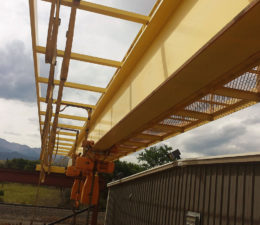Hoist Duty Classifications: How Do They Compare?

Hoist duty classifications are published standards for material handling, as defined by various institutions. Paying attention to these hoist duty classifications can help you make sure you use your hoist safely and effectively.
If you buy and use a hoist without the necessary material handling qualifications, you run the risk of costly repairs, workplace safety hazards and a loss of productivity.
FEM hoist duty classifications
FEM is the European Federation of Materials Handling. FEM uses load spectrum and average daily operating time for its hoist duty classifications.
HMI hoist duty classifications
HMI is the Hoist Manufacturer’s Institute. HMI and the American Society of Engineers (ASME) have created classifications based on number of lifts per hour, maximum number of starts and stops per hour, average distance the load is raised and lowered, average and maximum weight to be lifted, and the frequency at which the maximum weight is lifted.
HMI only rates hoists, and not the entire crane. Therefore, the duty ratings can vary from the classes that CMAA has.
CMAA hoist duty classifications
CMAA is the Crane Manufacturers Association of America. CMAA bases classifications on the crane’s number of lift cycles and average load intensity.
You may also see CMAA abbreviated as MHI, which refers to CMAA’s affiliate, Material Handling Industry.
How do FEM, HMI and CMAA classifications compare?

When you’re looking for a crane and hoist solution for your company, consider the various classifications before you make your decision. It’s important to find equipment with a hoist rating that matches your operational needs.
Contact us today about your crane and hoist needs >










